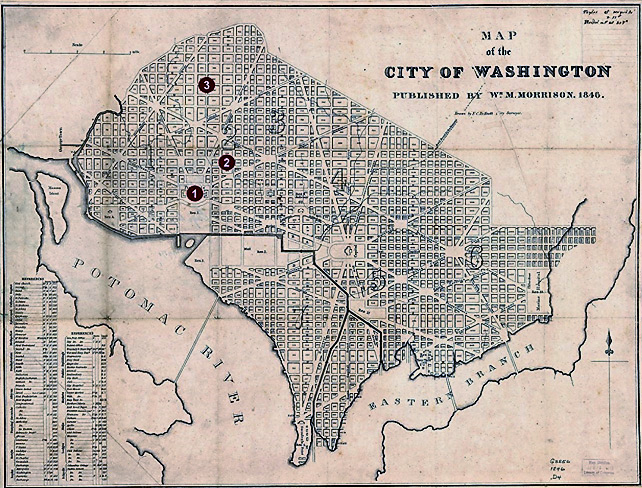The relationship between these three is that they all had gastrointestinal symptoms including high fever, belly pain, and constipation or diarrhea and lived during a time when the national capital had no access to a proper and efficient sewage system. Until 1850, sewage simply flowed onto public grounds and formed a marsh near the White House, which just happened to be seven blocks downstream of the human "night soil" depository. Inevitably, the marsh of human excrement would become the perfect breeding ground for deadly bacteria, including Salmonella typhoid and Salmonella paratyphoid, the causes of typhoid, or enteric fever.
Harrison had a history of dyspepsia (indigestion), which heightened the risk of him being infected by gastrointestinal pathogens from the dirty water supply. Even his doctor, Thomas Miller, wrote that Harrison's "disease was not viewed as a case of pure pneumonia; but as this was the most palpable affection, the term pneumonia afforded a succinct and intelligible answer to the innumerable questions as to the nature of the attack.” Unfortunately for Harrison, there was no effective treatment for enteric fever, and the most Miller could do was feed him a few medications containing opium, which ironically helped the microbial pathogens' invasions into the bloodstream and undermined the intestine’s ability to rid itself of them. As Miller has suspected, pneumonia was simply a secondary disease, allowing for the real killer to continue to spread.
Both Polk and Taylor experienced similar symptoms and developed severe gastroenteritis while living in the White House as well. Although some may argue that Polk made it out of the White House alive, it is still evident that he died three months after his term ended. Similarly, he fell victim to a common gastrointestinal disease: cholera morbus. During Polk's time in office, little improvement was made to the water system, so after the iced-milk-and-cherry-enthusiast Taylor assumed presidency, he also experienced symptoms associated with water-borne diseases, including cholera and typhoid. Furthermore, young Willie Lincoln, the third son of Abraham Lincoln, died of typhoid fever in 1862.
In addition to the residents of the White House, many civilians and soldiers fell victim to the bacteria-infested water. The U.S. Civil War (1861-65) brought epidemics of dysentery, typhoid fever, and other gastrointestinal diseases. Over three times as many soldiers died from the epidemics compared to those who died of battle wounds.
This historical evidence proves that Harrison's earned nickname "His Accidency" may have not been an accident, and all along, the bacteria-infested water was the assassin that stalked the White House for twenty years.

Sources:
https://www.saturdayeveningpost.com/2019/04/killer-in-the-white-house/
https://www.saturdayeveningpost.com/wp-content/uploads/satevepost/2019-04-23-NightSoil.jpg
https://www.nytimes.com/2014/04/01/science/what-really-killed-william-henry-harrison.html
https://www.infectiousdiseaseadvisor.com/home/decision-support-in-medicine/infectious-diseases/enteric-fever/
http://sites.rootsweb.com/~wijuneau/Epidemics.htm
Your article title was quite a hook, but I was pleasantly surprised that you were referring to the infectious diseases that plagued many of America's earlier presidents. Your insight into gastrointestinal diseases has given me a deeper appreciation for modern medicine; now we can rest under the assurance that our presidents will survive well beyond the end of their terms
ReplyDeleteThis comment has been removed by the author.
ReplyDeleteThis was really interesting! I had no idea what this article was going to be about and I had no idea that this was such a prevalent problem in our past and how much it affected people lives, even the president. It's funny to think nowadays that there could be bacteria in the water in the White House. It goes to show how lucky we are nowadays to have such excellent plumbing and sewage systems. I also really liked how you added all the analysis about the bacteria on the post.
ReplyDelete